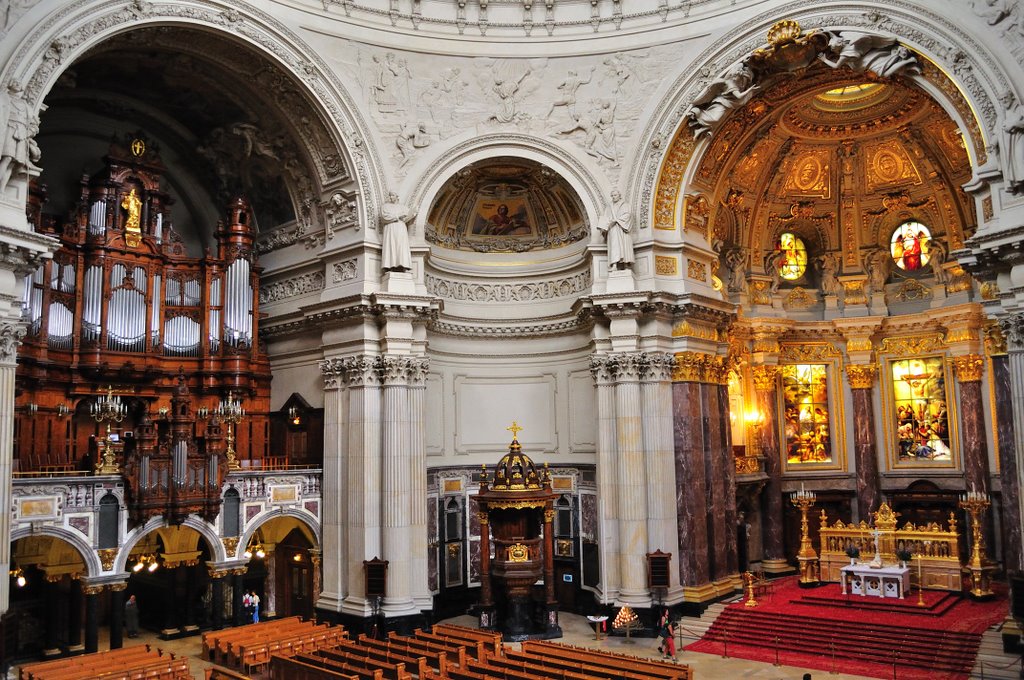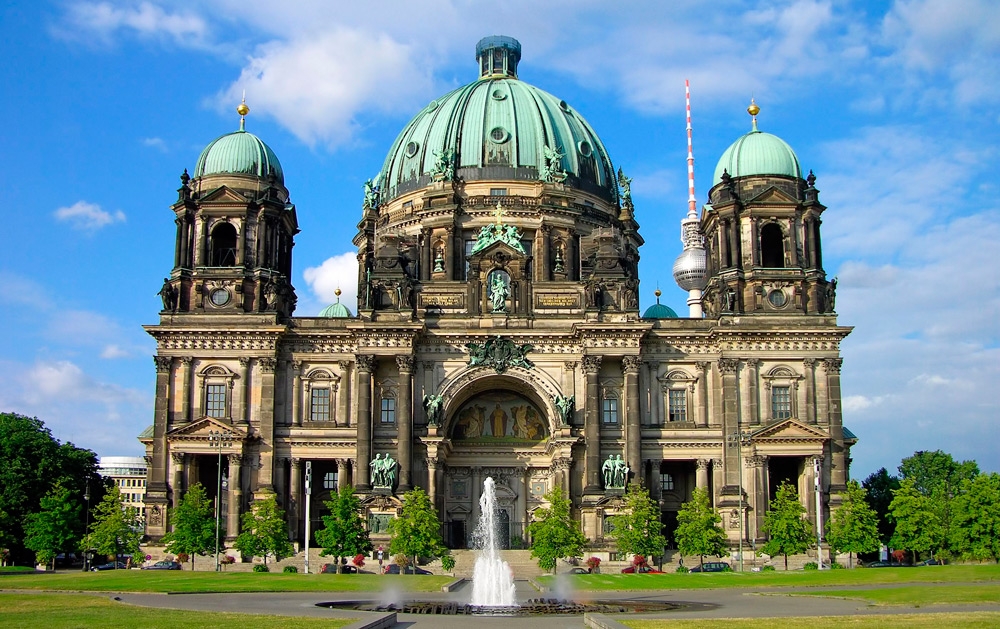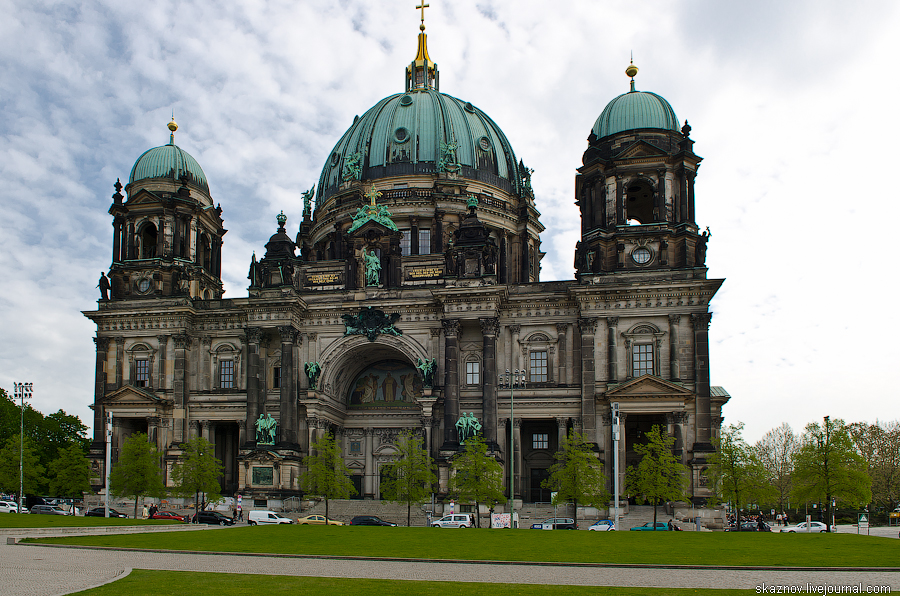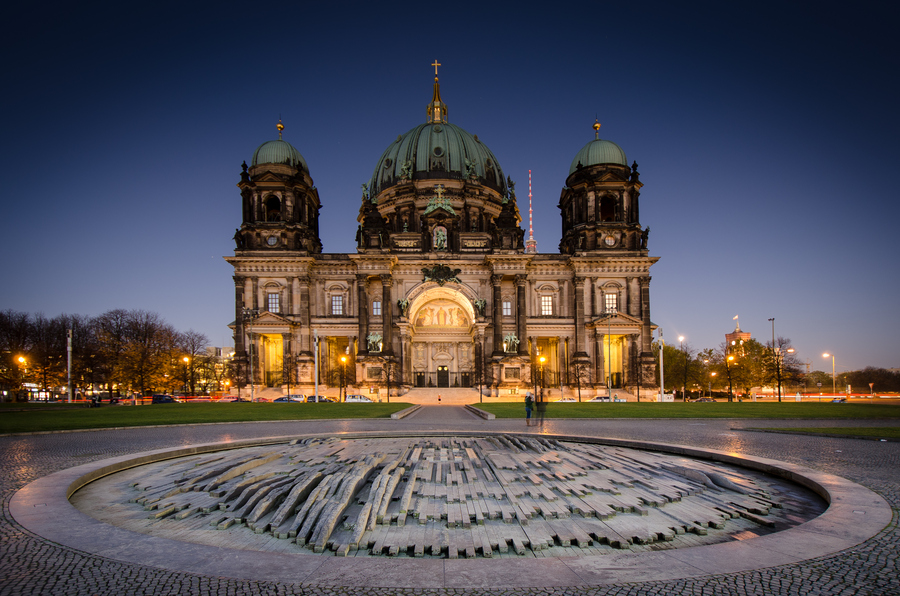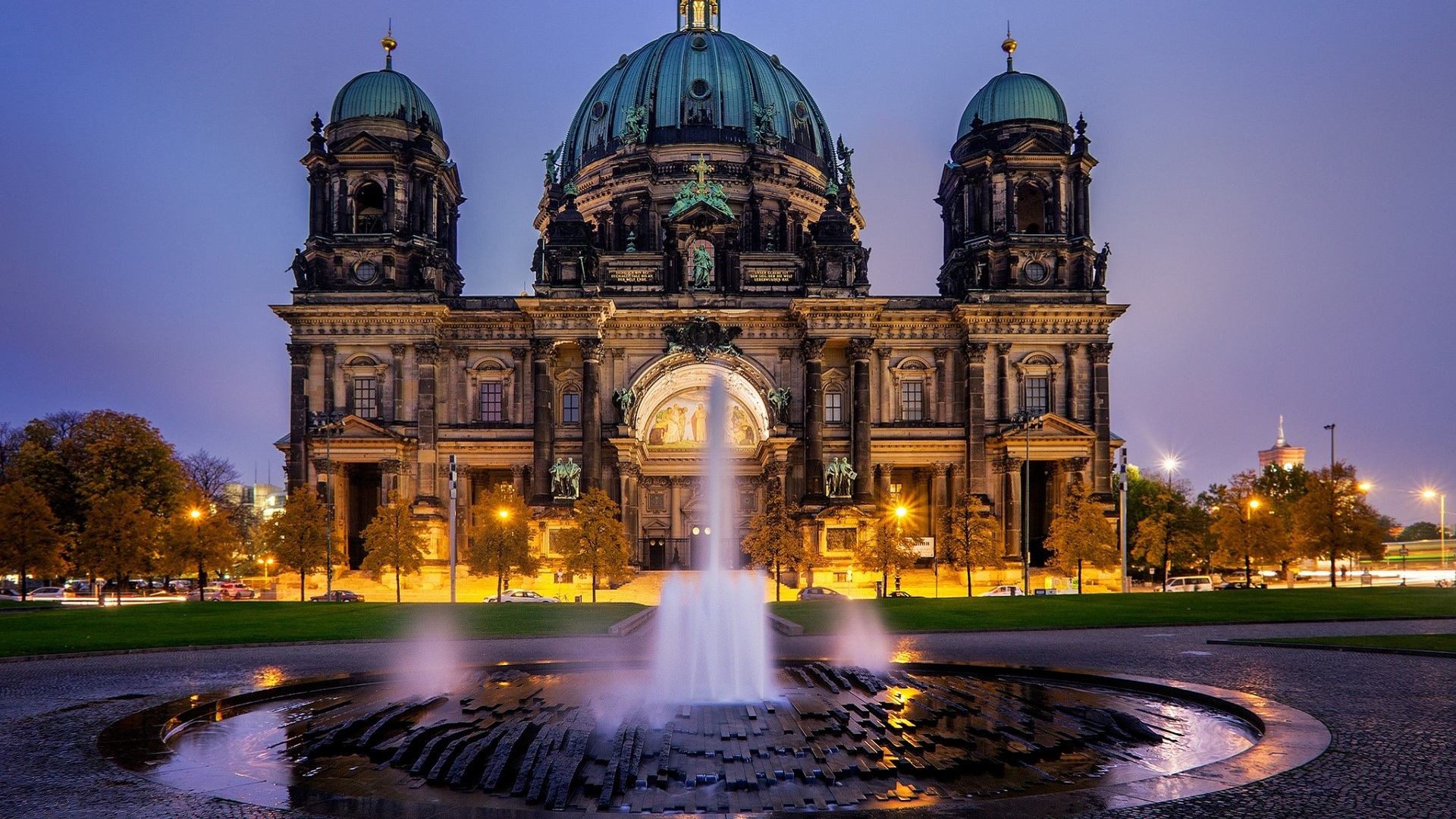Berlin Cathedral (German: Berliner Dom) is the short name for the Evangelical (i.e. Protestant) Supreme Parish and Collegiate Church (German: Oberpfarr- und Domkirche) in Berlin, Germany. It is located on Museum Island in the Mitte borough. The current building was finished in 1905 and is a main work of Historicist architecture of the "Kaiserzeit".
The Dom is the parish church of the congregation Gemeinde der Oberpfarr- und Domkirche zu Berlin, a member of the umbrella organisation Evangelical Church of Berlin-Brandenburg-Silesian Upper Lusatia. The Berlin Cathedral has never been a cathedral in the actual sense of that term since it has never been the seat of a bishop. The bishop of the Evangelical Church in Berlin-Brandenburg (under this name 1945–2003) is based at St. Mary's Church and Kaiser Wilhelm Memorial Church in Berlin. St. Hedwig's Cathedral serves as the seat of Berlin's Roman Catholic metropolitan bishop.
The Collegiate Church Residing in the former Black Friars' Church of St. Paul's south of the Palace (1536–1747)
In 1535 Prince-Elector Joachim II Hector reached the consent of Pope Paul III to shut down the 1297-founded Dominican convent (Black Friars), southerly neighboured to the palace, to acquire the pertaining monastic St. Paul's Church, built ca. in 1345. On 28 May 1536 most of the Black Friars moved to a Dominican monastery in Brandenburg upon Havel. Joachim II Hector assigned the thus void, three-nave church building to the Collegiate Church of Our Lady, the Holy Cross, the Ss. Peter, Paul, Erasmus and Nicholas and enlarged the College to 12 prebendaries, bestowing two of them to canons taken on from the Dominican convent. From 1545 on the electoral family of Hohenzollern used the church building also as their burial place.
In 1538 a new western façade with two towers was attached to the collegiate church, which – due to its prior status as a church of a mendicant order – had no tower before. In the next year Joachim II Hector converted from Catholicism to Lutheranism, as earlier had done many of his subjects. The collegiate church thus became Lutheran too, like most of the electoral subjects and all the churches in the Electorate. However, Joachim II Hector's ideas of Reformation were different from the modern ones. After his conversion he enriched the collegiate church with luxuriant furnishings, such as paraments, monstrances, relics, chasubles, carpets and antependia.
In 1608, the year of his accession to the throne, Prince-Elector John Sigismund, then a crypto-Calvinist, dissolved the college and the church was renamed into Supreme Parish Church of Holy Trinity in Cölln. In 1613 John Sigismund publicly confessed his Calvinist faith (in Germany usually called Reformed Church), but waived his privilege to demand the same of his subjects (Cuius regio, eius religio). So he and his family, except of his steadfastly Lutheran wife Anna, converted, while most of his subjects remained Lutherans. While Berlin's other churches, subject to Lutheran city-council jurisdiction, remained Lutheran, the Supreme Parish Church of Holy Trinity, the Hohenzollern's house church, became Berlin's first, and until 1695 only Calvinist church, serving from 1632 on as the parish for all Calvinists in town. Being now a Calvinist church the patronage of the Holy Trinity was increasingly skipped.
In 1667 the dilapidated double-tower façade was torn down and in 1717 Martin Böhme erected a new baroque façade with two towers. With effect of 1 January 1710 Cölln was united with Berlin under the latter name. In 1747 the Supreme Parish Church was completely demolished to clear space for the baroque extension of the Berlin Palace.




